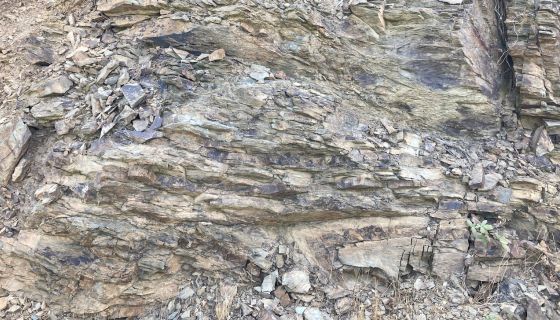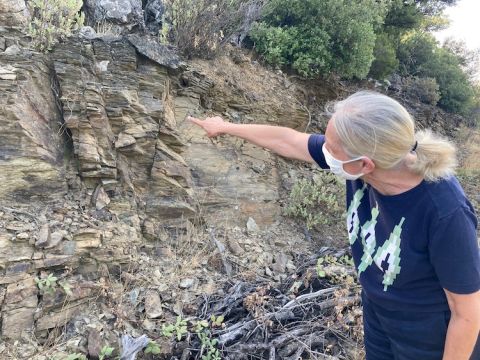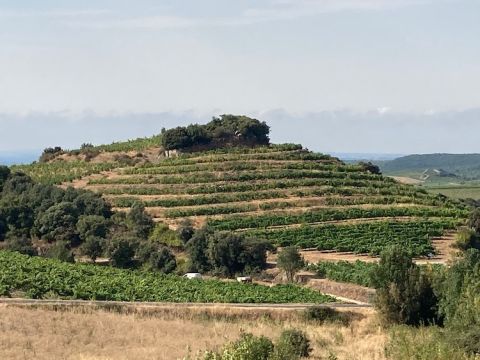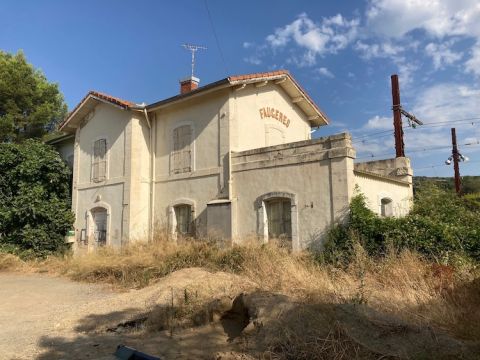Brigitte Chevalier of Domaine de Cébène makes truly superb wine by any measure, hand-made, terroir-dictated wine that has been getting better and better now that she has her own custom-built cellar dug out of an isolated hill, rather than having to make wine in cramped rented space in a nearby village.
During a socially distanced visit there last month I asked her whether she had put her prices up. She exchanged blank looks with her husband, local wine consultant Pierre Roque. Turning back to me she frowned and shook her head. ‘No. This is the Languedoc.’ There you have the nub of the problem of France’s most extensive wine region, one that can provide wine lovers with an array of potential bargains.
I asked Chevalier’s US importer Eric Solomon of European Cellars why I could find so few listings of her wines on the generally trustworthy Wine-Searcher.com, and then only older vintages. He emailed his frustration from a country bedevilled by ongoing 25% tariffs on French imports and a stagnant hospitality industry: ‘the wines are brilliant but in a strange middle price point. The market here in recent years has not embraced Languedoc wines except for the cheap and (not very) cheerful candidates.’ Perhaps the wines would sell better in the US if they were more expensive? Current prices are $12 to $35 a bottle for the 2013 and 2015 vintages in the US and £11 to £34 for the 2014 to 2019 vintages in the UK.
As Solomon well knows, all over the Languedoc are small wine domaines making the very best wine they can from hugely distinctive vineyards, typically in the foothills of the Cévennes. They are high above the plains that delivered plonk for the masses in the second half of the last century and still churn out inexpensive varietals labelled IGP Pays d’Oc. But can these hard-working vignerons sell their wines? Even at bargain prices, and even in the open-minded UK market, the Languedoc is a hard sell. Rather than selling on the basis of a well-known grape variety, the best wines tend to be labelled with the name of one of the region’s many and relatively little-known appellations. This can make life complicated for those both selling and buying the wines.
Brigitte Chevalier is one of the stars of Faugères, one of the Languedoc’s most distinctive appellations in the hills above Béziers. It is defined by the schist which is visible everywhere – just as in Portugal’s Douro valley, where grapes for port are grown, and in Priorat in Catalunya, whose wines can also taste almost as though they contain powdered rock. But a major asset of schist is its ability to keep vines sufficiently moist in a region with dramatically low rainfall. Roque and Chevalier had seen practically no rain since March, but kept showing me with delight walls of schist in vineyards and by roads through which plant roots had insinuated themselves between the layers of rock to reach metres down towards moisture. The larger appellation of St-Chinian to the west also has schist, but only in part of it. In Faugères, slogan ‘Grand Terroir de Schiste’, the 50 or so producers revel in the appellation’s homogeneity.
Chevalier is from Bordeaux where, in her 10 years exporting wine for the well-known St-Émilion wine producer and impresario Jean-Luc Thunevin (who says she was one of his best employees ever), she would have been exposed to some of the greatest wines of Europe. Her conversation is peppered with references to her native region where she claims the wines are so much less varied and interesting than further south. She long wanted to make wine herself but says she wanted to be a pioneer rather than follow the Bordeaux recipe, and was particularly fascinated by the effect of schist. There is some in Roussillon on the Spanish border but she was attracted by the cooler climes of the Haut-Languedoc. (She was also, presumably, encouraged by the relatively low land prices in Faugères.) When she arrived, in time to make the 2008 vintage, she deliberately looked for north-facing, low-yielding vineyards rejected by the locals as unprofitable. Grapes in these cooler vineyards – hers are at 300 m (1,000 ft) elevation or more – were traditionally more difficult to ripen, but later ripening is of course a boon in this era of hotter summers.
She put together her domaine, now certified organic, from scratch, being guided by the sort of wine she wanted to make – delicate, fine – and she now has a total of 10.5 ha (26 acres) of vines in production, on four carefully chosen sites with pitifully low yields: sometimes as little as 15 hl/ha, much lower than in Bordeaux.
Six of her hectares immediately surround her underground cellar, now with a home and tasting room on top – so convenient. When I drew up to the neat, modern villa there was a keen breeze. I was assured that the day counted as remarkably still compared with the windy norm that presumably helps keep vine diseases at bay. It was rather hazy but I was assured that they can sometimes even make out the shipping-company logos on the sides of the larger vessels on the Mediterranean in the distance.
Her other parcels are not far away and include the most extraordinary hillock round which narrow terraces of vines wind, to such an extent that the locals call it l'escargot. The man who sculpted the vineyard grew tired of its low yields but the Syrah vines that push up through the rocky fragments give Chevalier just the sort of nervy base she wants for the bottling she calls Les Bancèls, after the local word for vine terraces.
The Faugères regulations outlaw wines made from only one of the permitted grape varieties, chiefly Syrah, Grenache, Mourvèdre and Carignan for reds and rosés, and various Rhône varieties plus Vermentino for the unusually lively whites. As Chevalier showed me her naturally cool underground cellar, which she describes as ‘zen’, she spoke of her delight in the art of blending the contents of her row of shiny 5,000-litre tanks, and how Pierre had taught her to shape the blending ingredients in advance, in the vineyard. She uses very little wood, just a few 500-litre casks for her Felgaria bottling based on the unusual combination of Mourvèdre and schist. Belle Lurette is based on old Carignan vines while her sumptuous Grenache-based Ex Arena bottling has to be sold as an IGP Pays d’Oc because the sandier soil on which it is grown is not deemed schistous enough to qualify for the local appellation.
Faugères used to be rather sleepy, as witness its abandoned train station above, but Chevalier claims the locals are gradually waking up to the ‘treasure beneath their feet’ and is heartened by the advent of a few outsiders such as those at Dom Les Serrals and Dom de Monthélys who have been asking her for advice. As well they might.
Languedoc recommendations
All of these have produced two or more wines that scored at least 17 out of 20 in our recent coverage of the Languedoc and Roussillon. See
Fizz and whites
Rosés (including rosés from elsewhere)
Reds from producers A–L
Reds from producers M–Z and sweet wines
More Languedoc and Roussillon 2020
Ch des Adouzes, Faugères
Ch d’Anglès, La Clape
Gérard Bertrand, top single-vineyard bottlings
Ch Les Bugadelles, La Clape
Ch Castigno, St-Chinian
Dom de Cébène, Faugères
Dom de la Cendrillon, Corbières
Les Clos Perdus, Corbières
Dom Gayda, IGP Pays d’Oc
La Jasse Castel, Languedoc
Ch La Liquière, Faugères
La Madura, St-Chinian
Mas de Daumas Gassac, IGP St-Guilhem-le-Désert, Cité d’Aniane
Mas Lasta, Terrasses du Larzac
Dom Montrose, IGP Côtes de Thongue
Ch Puech-Haut, Languedoc
La Réserve d’O, Terrasses du Larzac
Ch and Dom Rives-Blanques, Limoux
Dom Ste-Croix, Corbières
Terre des Dames, Languedoc
Tasting notes on Purple Pages of JancisRobinson.com. International stockists on Wine-Searcher.com.

















